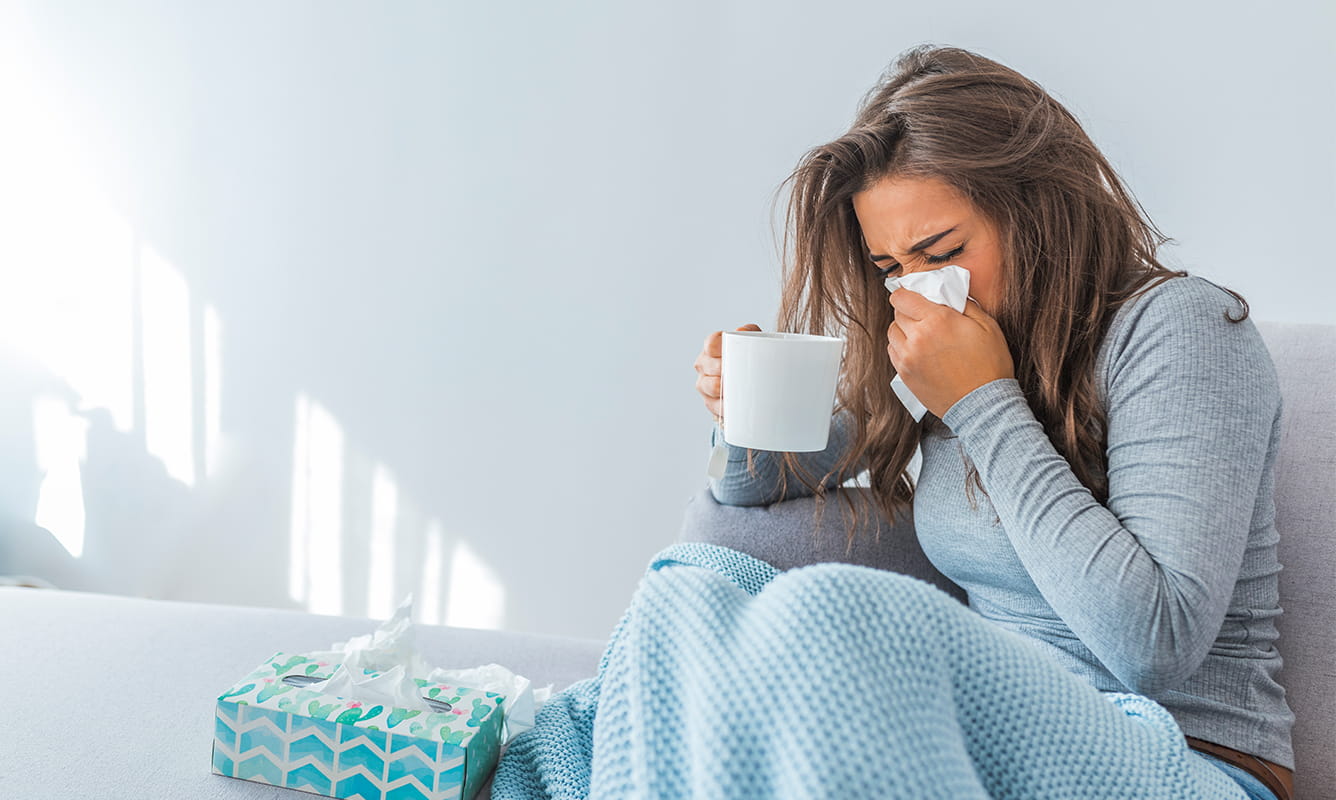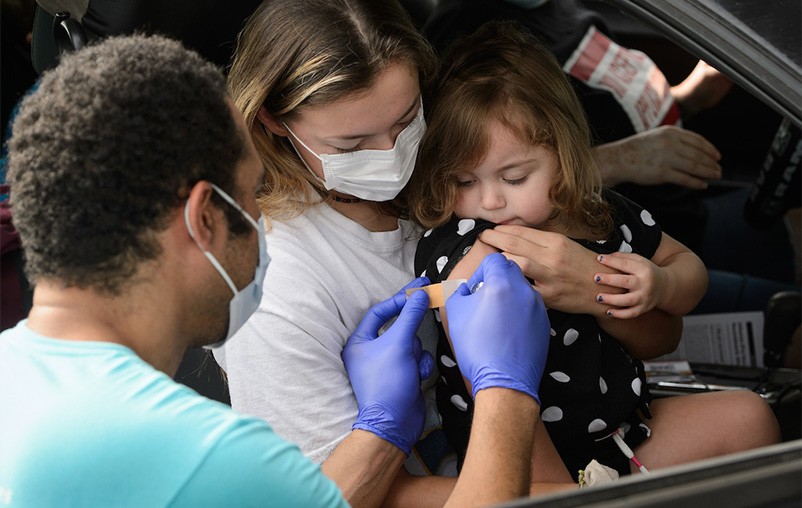Last updated March 8, 2021
Doses of the COVID-19 vaccines developed by Pfizer and Moderna are being administered around the world. Both have been authorized for emergency use by the U.S. Food and Drug Administration.
This news is reason to celebrate. “Safe and effective vaccines will reduce the burden of illness associated with COVID-19 and serve as an important intervention to provide additional protection against this disease,” says Dr. Bryan Alsip, University Health chief medical officer.
Vaccines are only authorized by the FDA if they are safe and effective according to the scientific findings of their testing. However, it’s understandable to have questions about the COVID-19 vaccine. Here are the answers to some of the most common questions.
What is the difference between the vaccines?
Right now, the FDA has only authorized use of the vaccines developed by Pfizer-BioNTech, Moderna and Johnson & Johnson. All three vaccines have shown high rates of effectiveness in their trial phases. The Pfizer-BioNTech and Moderna and Johnson & Johnson vaccines are administered in two doses. The Johnson & Johnson vaccine is administered via one dose.
The Pfizer vaccine must be stored at extremely cold temperatures, but the Moderna and Johnson & Johnson vaccine can be stored in equipment that exists currently at most hospitals and clinics.
There are also vaccines in the final phase of clinical trials being developed by several other pharmaceutical manufacturers.
Does the Pfizer vaccine's sub-zero storage requirement make it more painful to receive than other vaccines?
No. The Pfizer-BioNTech vaccine has to be transported frozen and stored in specialized freezers. However, before it is administered into your arm, it will be thawed in a refrigerator and then brought to room temperature for a minimum of 30 minutes. You will only receive the vaccine once it has reached room temperature.
When can I get the vaccine?
The State of Texas has designated groups to be the first to receive the new vaccine. The first tier (1A) includes people in healthcare working directly with patients that are positive or at high risk for COVID-19. Examples include physicians, nurses, therapists, pharmacists, technicians, custodial staff and any clinical staff providing supporting services such as laboratory, diagnostic, social and/or rehabilitation staff.
Vaccines for people in phase 1B begin on January 4, 2021. This group includes people 65 and over or people 18 and over with chronic medical conditions.
On March 3, 2021 the Texas Department of State Health Services announced that teachers, education personnel, and individuals who work for licensed child care providers are also eligible to receive the vaccine. This includes those who work in pre-primary, primary and secondary schools, as well as Head Start and Early Head Start programs.
If you are in phase 1B, you can register online for a free vaccine appointment with University Health. Appointments are available Monday through Saturday from 8 a.m. - 8 p.m. at Wonderland of the Americas. This page is updated with new appointment slots as University Health receives more vaccine.
Plans for phases 2 and 3 will be announced by the state. The majority of the public will have access to a vaccine during phase 3 which is expected to occur in 2021, though probably not until the late spring or summer.
This is happening so quickly. Should I be concerned?
The timeline for vaccine development may seem quick, but both the Pfizer and Moderna vaccines were developed following years of genome sequencing and coronavirus research. The world was lucky in two respects:
- The genome of the novel coronavirus was mapped and shared very quickly after its emergence in 2019.
- Researchers had already spent years developing the groundwork for a coronavirus vaccine in their research on MERS and SARS.
Scientists were able to map the virus extremely quickly. The scientific and medical community could then build on the research they had already conducted in studying other viruses that attack our respiratory system to develop a vaccine for the virus that causes COVID-19.
Other recent vaccines and treatments also received speedy authorizations and approvals. The H1N1 influenza virus emerged in early 2009 and was declared a pandemic in June 2009. A vaccine was developed and distributed by October 2009 to health care workers.
Also, during the Ebola outbreaks, regulators around the world streamlined the paperwork process for approving new treatments and vaccines. This nimbleness in processes now allow more flexibility in treatment and vaccine development for COVID-19 while still keeping safeguards in place.
What is Emergency Use Authorization for a drug or vaccine?
Emergency Use Authorization allows treatments or vaccines to be given to some people while clinical trials and studies continue. They have been used in the past for remdesivir, Zika virus treatments, Ebola virus treatments and H1N1 vaccinations.
The FDA is requiring all vaccine makers who request Emergency Use Authorization to submit two months of follow-up data from half of the people enrolled in the clinical trials. Full approval of any vaccine will require up to six months of safety follow-up and inspections of manufacturing sites. The earliest any vaccine could receive full FDA approval would be summer 2021.
Emergency Use Authorization of one or more COVID-19 vaccines is only the first step in slowing the virus. People need to take it for it to work.
Read more about the Emergency Use Authorization for the Pfizer COVID-19 vaccine.
How do these vaccines work?
Vaccines work by stimulating our immune system. Most vaccines do this by introducing a killed or weakened version of the disease organism.
The Pfizer and Moderna vaccines use Messenger RNA technology. The mRNA vaccines trigger the immune system by promoting the manufacture of one part of the COVID-19 virus, the spike protein. A section of genetic code for the COVID-19 spike protein is included in mRNA. This prompts our cells to make the protein that creates an immune response, which can protect you against a real infection. Essentially, using an mRNA vaccine, we trick our own cells into developing an immune response to COVID-19.
The Johnson & Johnson vaccine is an adenovirus vector vaccine. Researchers replaced a small piece of the genetic instruction in the adenovirus, which is harmless, to stimulate the immune system to create antibodies that will protect against the virus that causes COVID-19. Adenovirus cannot replicate in humans.
There is no live, weakened or inactive coronavirus in these vaccines.
Has this vaccine been tested?
Yes. All vaccines authorized for emergency use have completed phase 3 clinical trials, which involves studies in humans. The FDA requires the manufacturers to continue to report study findings even after an Emergency Use Authorization. The earliest any vaccine could be granted full use authorization is July 2021.
What are the possible side effects?
Side effects reported include soreness at the injection site, fever, chills, headache or muscle and joint pain. This is similar to reactions some people have to other vaccines, including influenza and shingles.
Does the vaccine cause COVID-19?
No. There’s no COVID-19 virus in either the Pfizer or Moderna vaccines. They use a snippet of genetic code that mimics the COVID-19 protein spike. There is no virus – live or dead – in either vaccine. You cannot get COVID-19 from the vaccine.
The Johnson & Johnson vaccine is an adenovirus vector vaccine and also contains no live COVID-19 virus. You cannot get COVID-19 from any available vaccine.
How do I report side effects or reactions?
Once you get the vaccine, The Centers for Disease Control and Prevention has created a smartphone-based tool called V-safe that uses text messaging and web surveys to report any side effects after getting the COVID-19 vaccine.
If you experience serious side effects, call your doctor right away. It’s possible you could have been infected with COVID-19 before you received the vaccine.
If you believe you are having a severe allergic reaction, call 911 or go to the nearest emergency room.
Will we still have to wear masks after we have received both parts of the COVID-19 vaccination series?
Yes, we will need to continue to wear masks, keep our distance and wash our hands for some time. On March 8, 2021, the CDC announced certain situations where fully vaccinated people can visit with others without wearing a mask. Read the full CDC guidelines.
While the vaccine prevents those who take if from developing symptoms, we are still learning how effective it is at preventing the spread of COVID-19.
We will continue to update this article with information about COVID-19 vaccines as new developments are available.





